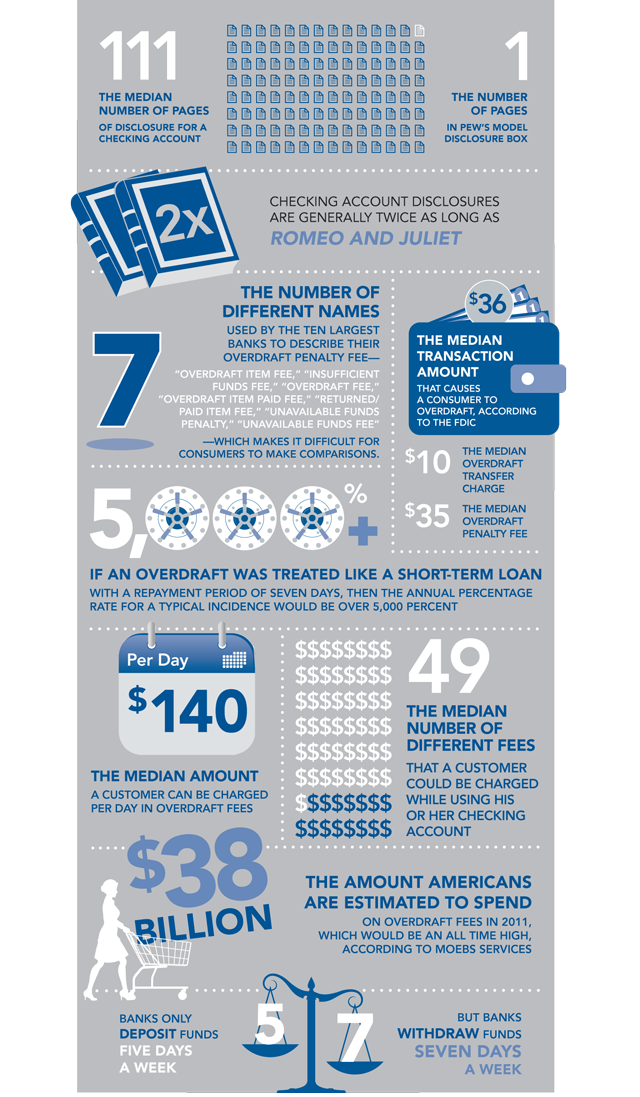Checking Account Disclosure Documents Are Longer Than Romeo & Juliet, Contain Less Teen Sex
We recently wrote about the PIRG study showing how fewer than 40% of banks were willing to clearly disclose checking account fee schedules. Now a new report from the Pew Charitable Trust demonstrates just how far banks are willing to go to make it difficult for consumers to know what they are getting with their checking accounts.
The Pew’s study looked at more than 250 types of checking accounts offered online by the ten largest banks in the United States and found that the median length of disclosure documents to be 111 pages, “consisting of account agreements, addendums to account agreements, fee schedules… Many of these documents are not user friendly, with much of the text densely printed, difficult to decipher, and highly technical and legalistic…
“In addition, the banks often used different names for the same fee or service; put the information in different documents, different media (Web or hard copy), or different locations in a document; and did not summarize or collect key information anywhere.”
According to the Pew folks, the amount of text in these documents comes out to around twice what you’d find in a copy of Romeo & Juliet.
Among the other findings in the study:
• Overdraft fees will cost American consumers an estimated $38 billion in 2011–an all-time high.
• Banks reserve the right to reorder transactions in a manner that will maximize overdraft fees. “Banks can maximize the number of times an account ‘goes negative’ by reordering deposits and withdrawals to reduce the account balance as quickly as possible. Posting withdrawals before deposits and posting withdrawals from largest to smallest have the effect of maximizing overdrafts.”
• More than 80 percent of accounts examined contain either binding mandatory arbitration agreements or fee-sharing provisions that require the accountholder to pay the bank’s losses, costs, and expenses in a legal dispute regardless of the outcome of the case.
To find out more, check out the whole report here, or look at the following infographic the Pew people put together to sum up a lot of their findings:

Want more consumer news? Visit our parent organization, Consumer Reports, for the latest on scams, recalls, and other consumer issues.

